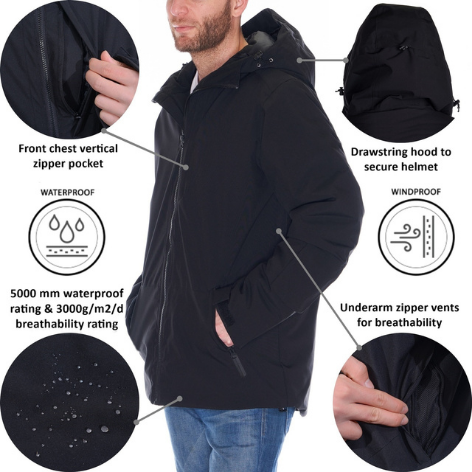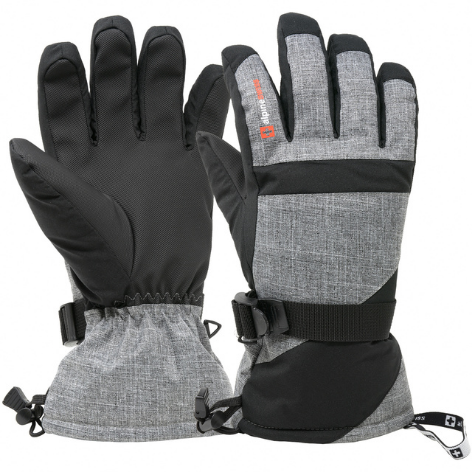What To Wear Skiing: Ultimate Guide From Alpine Swiss
2021-11-29
First time to ski? Your outfit can make or break your experience. When dressing for skiing, it's important to start with a good base, and then build up your layers depending on the conditions. In this article, we'll show you a step-by-step guide on what to wear when skiing for a safe, comfortable, and memorable experience so that you could choose your winter sports gear more quickly and smart.
What To Wear For Skiing
Ski Base Layers
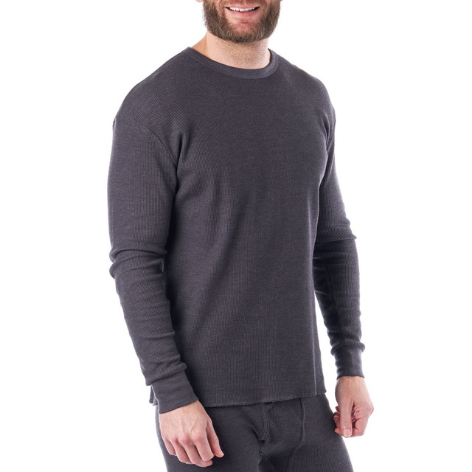
MENS THERMAL UNDERWEAR LONG JOHN SET WAFFLE KNIT TOP & BOTTOM BASE LAYER
View Product
The first step on how to dress for skiing is choosing your base layers. A base layer is a piece of insulating clothing that will help regulate your body temperature by wicking moisture (perspiration) from your skin to keep you warm and dry. Base layers include t-shirts, leggings, underwear, and tights. Some base layers are tight while others are more loose-fitting. They also come in various thicknesses and weights. Choosing your base layers will depend on various factors like the temperature and your activity levels. Lightweight and tight-fitting base layers are best suited for mild to cool conditions while looser-fitting, heavyweight base layers are designed for harsh climates. Choose a base layer that will cover you from neck to your ankle, such as a long tight-sleeved t-shirt and a pair of trousers or pants that sit below your ski trousers. The best materials for your base layers have insulating properties but don't easily absorb water, such as synthetic blends or merino wool.
Ski Mid Layers & Insulation
Before you put on your outer layers, you need a middle layer that will trap warm air and keep you warm and comfortable while skiing. It could be made of a single piece or multiple items of clothing. Examples are vests, hooded coats, or pullover-type sweaters. When choosing what to wear, remember that your mid-layer shouldn't be too tight that it restricts your movement or makes you feel uncomfortable, nor too loose that it may not fit properly under your ski jacket. Also consider things like interior pockets for keeping your camera or phone, a hood to insulate your head, and a zipper or button-down if you need to cool your body. The best materials for mid-layers are those that are light, breathable, and insulating, such as wool, fleece, down and synthetic down.
Ski Socks
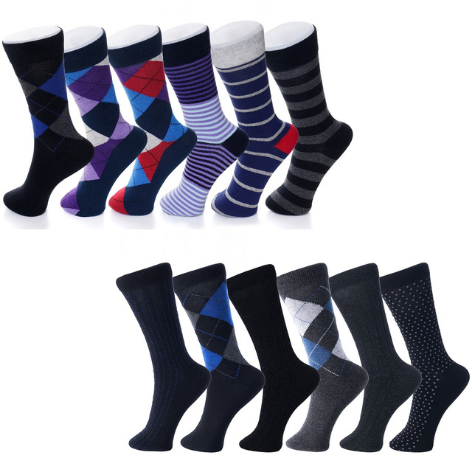
COTTON 12 PACK DRESS SOCKS SOLID RIBBED ARGYLE
View Product
Choosing the right socks is crucial for your foot comfort and also plays a role in choosing the right boots for skiing. That's why experts strongly advise selecting socks before purchasing new boots. The best socks for skiing are those made from either merino or a synthetic blend (or a combination of both.) Merino is an expensive fabric but it retains its warmth even when wet. It is also moisture-wicking and very breathable. However, some people are allergic to wool so they choose synthetic blends that are also great at trapping warmth and wicking moisture.
Ski Jacket
A ski jacket is another essential gear needed to wear for skiing. As your outermost layer, it plays a key role in keeping you warm, comfortable, and protected from the elements.
What to Look for in Ski Jackets
MENS WATERPROOF SKI JACKET SNOWBOARDING COAT WARM WINTER SNOW JACKET RAINCOAT
Activities
If you’re skiing at a resort, you need a comfortable jacket that keeps you warm and dry. If exploring the backcountry, you need a jacket that breathes well and promotes mobility. It should also be light and compressible so you can just throw it into your backpack when not in use. However, you will also find ski jackets that can be used for both types of activities, mixing high levels of weather protection with freedom of movement, comfort, and protection.
Features
Consider a ski jacket with lots of pockets so you can store plenty of items like snacks, your phone, car keys, etc. Other features to look for are zippered vents, insulation, hood, powder skirt, and pit zips.
Ski Pants (Or Bibs)
When shopping for ski pants, the first thing you need to decide on is whether you actually want pants or a pair of bibs instead. Ski bibs do better at keeping snow out. They also have more storage options and are more body-fitting and comfortable. However, bib straps can sometimes interfere with the straps on your backpack. It can be a little inconvenient especially if you're swapping layers a lot.
What to Look for in Ski Pants
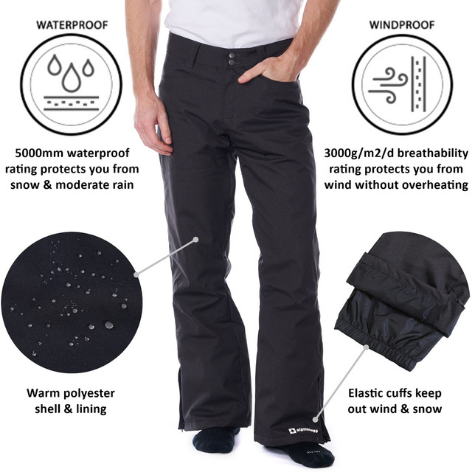
MENS WATERPROOF SKI SNOWBOARDING PANTS INSULATED WINTER SNOW PANTS
View Product
Waterproofing
When it comes to ski pants or bibs, the most important things to look for are technical stats like insulation and waterproofing. Manufacturers can use a variety of materials to waterproof ski pants or bibs, such as special membranes like Gore-Tex. Look for ski pants with a 20K waterproof rating.
Features
Choose ski pants with various pocket layouts. Zippered pockets are more secure than button and velcro pockets, though they can be a little inconvenient to open or close so spare them for valuables. Other features to look for are vents, cuffs, and kick patches.
Must-Have Accessories to Wear for Skiing
Gloves or Mittens
WATERPROOF GAUNTLET SKI GLOVES WINTER SPORT SNOW BOARD WINDPROOF 3M THINSULATE
View Product
Gloves and mittens designed for skiing and snowboarding feature warmth, dryness, and other features necessary for a day on the slopes. They can be made of different materials, such as synthetics and leather. They also include membranes like Gore-Tex, insulation, polyurethane coating, and Windstopper, among others. Your gloves or mittens need to fit properly. They should also provide a good level of dexterity, warmth, and comfort.
Helmet
Ski and snowboard helmets have specific features crucial to staying safe in the mountains. For example, its outer layer or shell has a rigid surface to protect you against sharp objects during a fall. Meanwhile, the inner liner is made of durable foam, such as expanded polystyrene (EPS) that is designed to absorb impact.
Goggles
Yes, you should also protect your eyes. Make sure to choose the right lens tint for the weather, terrain, and your activities. Consider goggles with photochromic lenses that automatically adjust to the light changes in your environment. Other features to look for are ultraviolet light protection, anti-glare, and anti-fogging.
Neck Gaiter Or Balaclava
Neck gaiters come in a variety of weights, from thin to lightweight and heavyweight fabrics. Look for a midweight fabric that is both warm and breathable, and is made from either wool or fleece. The best gaiters are breathable, moisture-wicking, warm, and lightweight. Look for something that feels comfortable to you and is non-suffocating.
Sunscreen
Choose a sunscreen with SPF30 or higher. More importantly, it should be waterproof as well since you are likely to sweat and get wet in the snow. Some sunscreens are specifically formulated for snow sports and provide ample protection from wind, moisture, and other elements.
Conclusion
Knowing what to wear for skiing is essential to keeping your warmth and comfort as you explore the mountains. Remember to consider factors like the terrain, weather, and condition when choosing what to wear to the snow.

Mariam Simmons
Mariam Simmons is a fashion enthusiast and Content Manager at Alpine Swiss. She loves traveling to the world’s top stylish destinations and gets inspired to create helpful fashion and lifestyle guides. With over a decade of writing experience, her main goal in creating content is to ensure readers learn something useful and provide value instead of noise.

